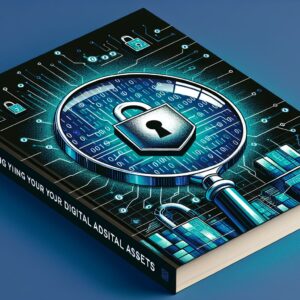Welcome, tech-savvy readers! In today’s digital age, where almost every aspect of our lives is intertwined with technology, it is crucial to be vigilant about cyber security and computer forensics. From protecting your personal information to safeguarding your organization’s sensitive data, understanding the fundamentals of cyber security and computer forensics can help prevent cyber attacks and data breaches. So, let’s dive into the world of cyber security and computer forensics and explore how you can safeguard your digital world.
Understanding Cyber Security
Cyber security is the practice of protecting computer systems, networks, and data from cyber attacks, unauthorized access, and data breaches. It includes a range of technologies, processes, and practices designed to defend against cyber threats. With the increasing sophistication of cyber attacks, it is essential to implement robust cyber security measures to protect your devices and data.
Some of the key components of cyber security include:
-
Firewalls: Firewalls act as a barrier between your internal network and the internet, monitoring and controlling incoming and outgoing network traffic to prevent unauthorized access.
-
Antivirus Software: Antivirus software helps detect and remove malicious software, such as viruses, worms, and trojans, from your devices.
-
Encryption: Encryption transforms data into a secure format to prevent unauthorized access, ensuring that only authorized parties can access the information.
-
Multi-factor Authentication: Multi-factor authentication adds an extra layer of security by requiring users to provide multiple forms of identification, such as a password and a unique code sent to their phone.
By implementing these cyber security measures, you can significantly reduce the risk of cyber attacks and protect your digital assets.
The Role of Computer Forensics
Computer forensics, also known as digital forensics, is the process of collecting, analyzing, and preserving digital evidence to investigate cyber crimes and data breaches. Computer forensics experts use specialized tools and techniques to recover, analyze, and interpret data from electronic devices to uncover the truth behind cyber incidents.
Some of the key aspects of computer forensics include:
-
Data Recovery: Computer forensics experts use forensic tools to recover deleted or hidden data from electronic devices, such as computers, smartphones, and tablets.
-
Evidence Analysis: Computer forensics experts analyze digital evidence, such as log files, emails, and metadata, to reconstruct events and identify potential suspects.
-
Chain of Custody: Computer forensics experts maintain a chain of custody to ensure the integrity and admissibility of digital evidence in legal proceedings.
By leveraging computer forensics techniques, organizations can investigate cyber incidents, identify the perpetrators, and take appropriate legal action to mitigate the impact of cyber crimes.
Best Practices for Cyber Security and Computer Forensics
Now that you understand the basics of cyber security and computer forensics, here are some best practices to help safeguard your digital world:
-
Keep Your Software Up to Date: Regularly update your operating system, applications, and security tools to patch vulnerabilities and defend against cyber attacks.
-
Implement Strong Passwords: Use complex passwords and enable multi-factor authentication to secure your accounts and devices from unauthorized access.
-
Back Up Your Data: Regularly back up your data to an external hard drive or cloud storage to protect against data loss due to cyber attacks or hardware failures.
-
Educate Your Employees: Train your employees on cyber security best practices and raise awareness about the risks of cyber attacks to prevent security breaches.
-
Partner with Cyber Security Experts: Consult with cyber security experts and computer forensics professionals to assess your organization’s security posture, identify vulnerabilities, and develop effective security strategies.
By following these best practices and staying informed about the latest cyber security trends, you can strengthen your defenses against cyber threats and protect your digital assets.
Conclusion
In today’s interconnected world, cyber security and computer forensics play a crucial role in safeguarding our digital world. By understanding the fundamentals of cyber security, implementing robust security measures, and leveraging computer forensics techniques, you can defend against cyber attacks, prevent data breaches, and protect your digital assets. So, stay vigilant, stay informed, and stay secure in the digital realm. Together, we can build a safer and more secure digital future.




